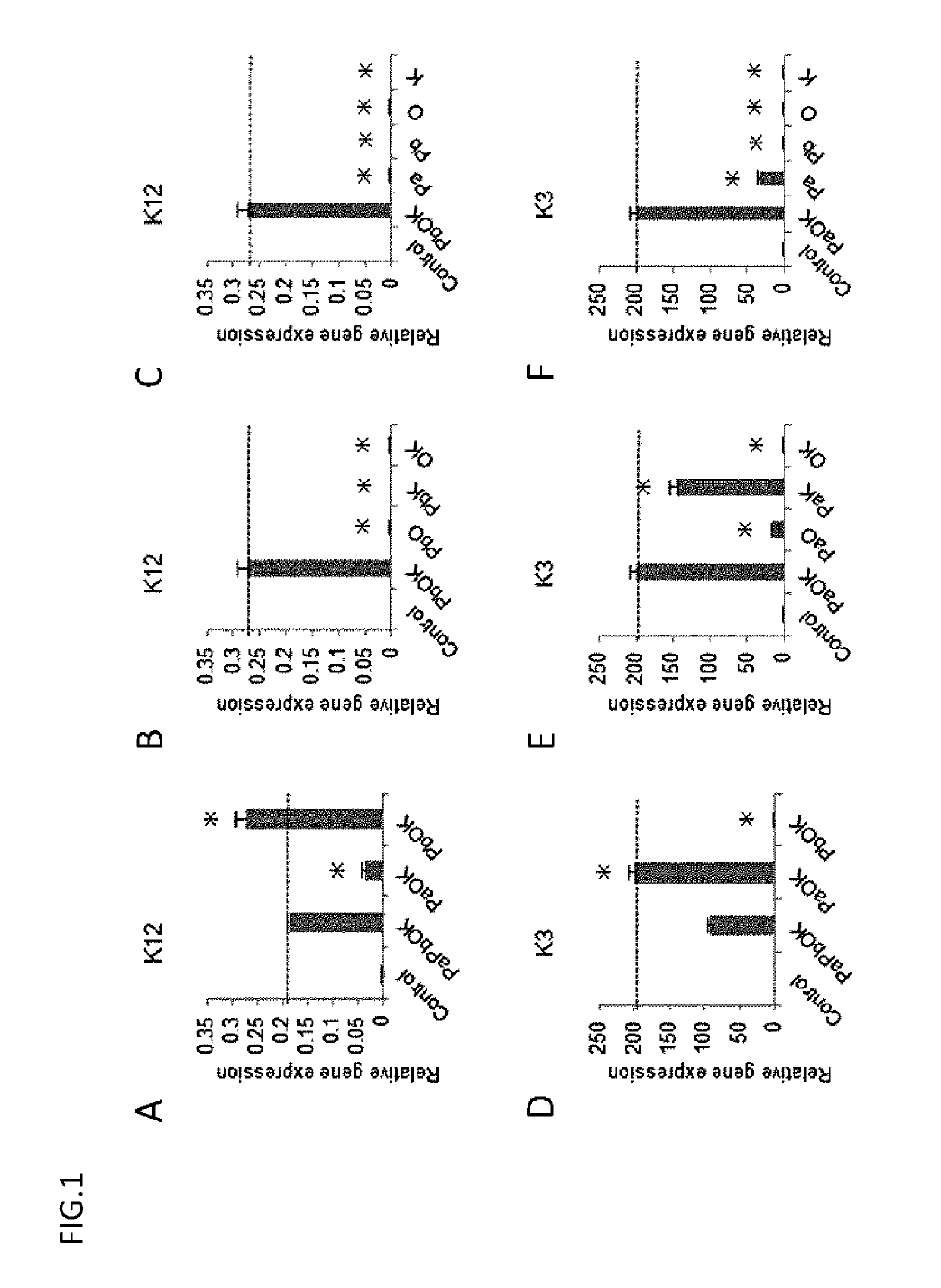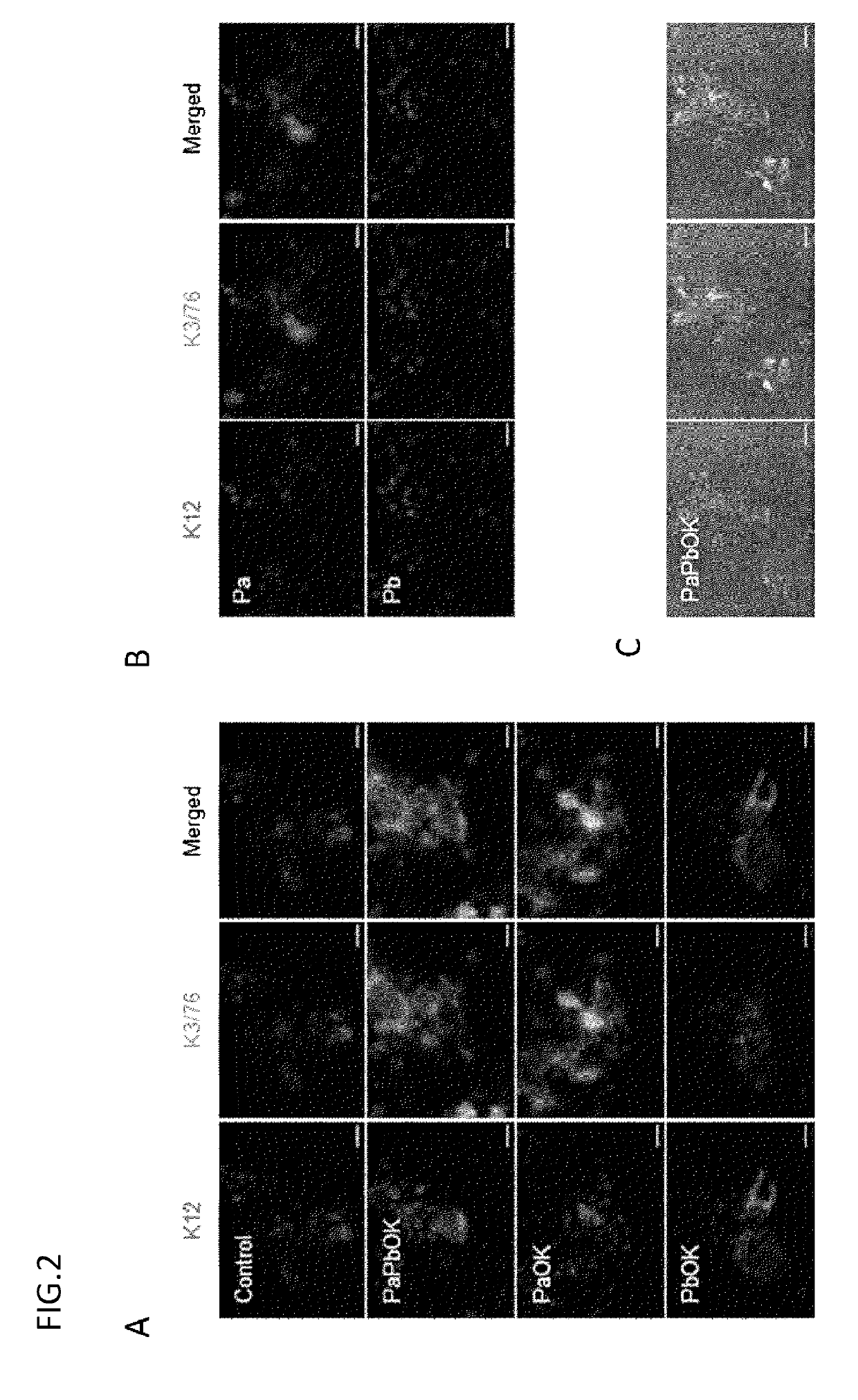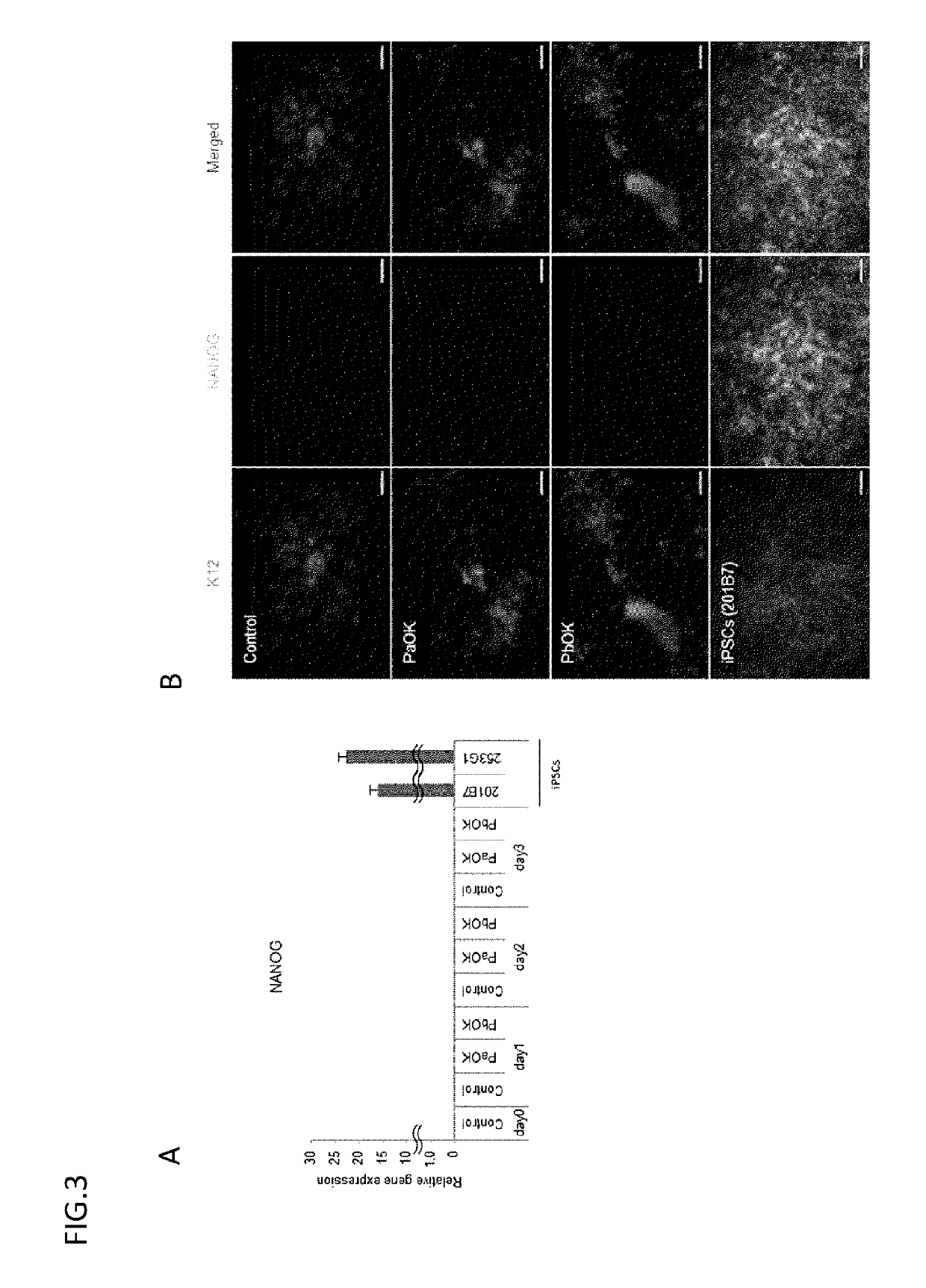Corneal epithelioid cells derived from surface ectodermal cells
a surface ectodermal cell and corneal epithelioid technology, which is applied in the direction of genetically modified cells, peptide sources, peptides, etc., can solve the problems of insufficient donor supply and rejection reaction, low transparency of the sheet using the oral mucosal epithelium, and many limitations in research and use of stem cells, so as to reduce the risk of tumorigenic transformation, short period of time, and favorable
- Summary
- Abstract
- Description
- Claims
- Application Information
AI Technical Summary
Benefits of technology
Problems solved by technology
Method used
Image
Examples
example 1
of Corneal Epithelioid Cell from Oral Mucosal Epithelial Cell
[0082]1. Material / Method:
[0083](Cell)
[0084]Immortalized human oral epithelial cells (OKF6 / TERT-1 cells) were used.
[0085](Medium / Culture Condition)
[0086]Cells were cultured under conditions of 5% CO2 and 37° C. in Keratinocyte-SFM to which 25μg / mL bovine pituitary extract (BPE), 0.2 ng / ml epidermal growth factor (EGF), and 0.3 mM CaCl2 were added.
[0087](Vector Construction)
[0088]An all-in-one vector in which PAX6 isoforms, Pa and Pb, their mutants, and PAX6-OCT4-KLF4 were linked using 2A was inserted into pLenti7.3 / V5-DEST vector (Life Technologies). OCT4 and KLF4 were inserted into CSV-CMV-MCS-IRES2-Venus plasmid (RIKEN BIO Resource Center).
[0089]The PAX6 isoforms were hereinafter sometimes referred to as Pa and Pb; KLF4, as K; and OCT4, as O.
[0090](Transduction)
[0091]The pLenti7.3-related vector was introduced into 293FT cells using ViraPower Lentiviral Expression System (Life Technologies) to produce a lentivirus. The CS...
example 2
ion of Genes into Various Cells
[0105]1. Material / Method
[0106](Cell Line)
[0107]Surface ectodermal cell: OKF6 / TERT-1, OKF6 / TERT-2, N / TERT-1, N / TERT-2, HOK
[0108]Neuroectoderm: ARPE-19, SH-SY5Y
[0109]Neural crest: HCEC
[0110]Mesoderm: HUVEC, NHDF-Ad, 293T
[0111]Endoderm: MKN1, HepG2
[0112]iPS cell: 201B7
[0113]PAX6 (Pa, Pb), KLF4, and OCT4 were introduced in various combinations into each of the above cell lines as in Example 1, and the expression of K12 and K3 on the resultant cells was confirmed by real-time PCR.
[0114]2. Result
[0115]The results are collectively shown in FIG. 5. K12 / K3 could be efficiently induced mainly on surface ectoderm-derived cells, but were little induced on endoderm- and mesoderm-derived cells and iPS cells. The induction efficiency was high in the surface ectoderm-derived cells having the same developmental origin as corneal epithelium.
example 3
ion of Gene Using All-in-One Vector
[0116]1. Method
[0117]Using an all-in-one vector, 3 genes (PAX6, OCT4, and KLF4) were liked in the combination of PaOK or PbOK to a lentivirus vector through 2A sequences to prepare each of 2 types of vectors. The vector was transduced into oral mucosal epithelial cells in the same way as in Example 1, and the expression of mRNAs and proteins was evaluated by electrophoresis, real-time PCR, and immunostaining.
[0118]2. Result
[0119]As a result of electrophoresis, the proteins were confirmed to be expressed separated from one another. The results of real-time PCR and immunostaining confirmed that the use of the all-in-one vector provided the sufficient expression of PAX6, OCT4, and KLF4 and thereby enabled the induction of K12 and K3 (FIG. 6).
PUM
| Property | Measurement | Unit |
|---|---|---|
| transparency | aaaaa | aaaaa |
| real-time PCR | aaaaa | aaaaa |
| structure | aaaaa | aaaaa |
Abstract
Description
Claims
Application Information
 Login to View More
Login to View More - R&D
- Intellectual Property
- Life Sciences
- Materials
- Tech Scout
- Unparalleled Data Quality
- Higher Quality Content
- 60% Fewer Hallucinations
Browse by: Latest US Patents, China's latest patents, Technical Efficacy Thesaurus, Application Domain, Technology Topic, Popular Technical Reports.
© 2025 PatSnap. All rights reserved.Legal|Privacy policy|Modern Slavery Act Transparency Statement|Sitemap|About US| Contact US: help@patsnap.com



